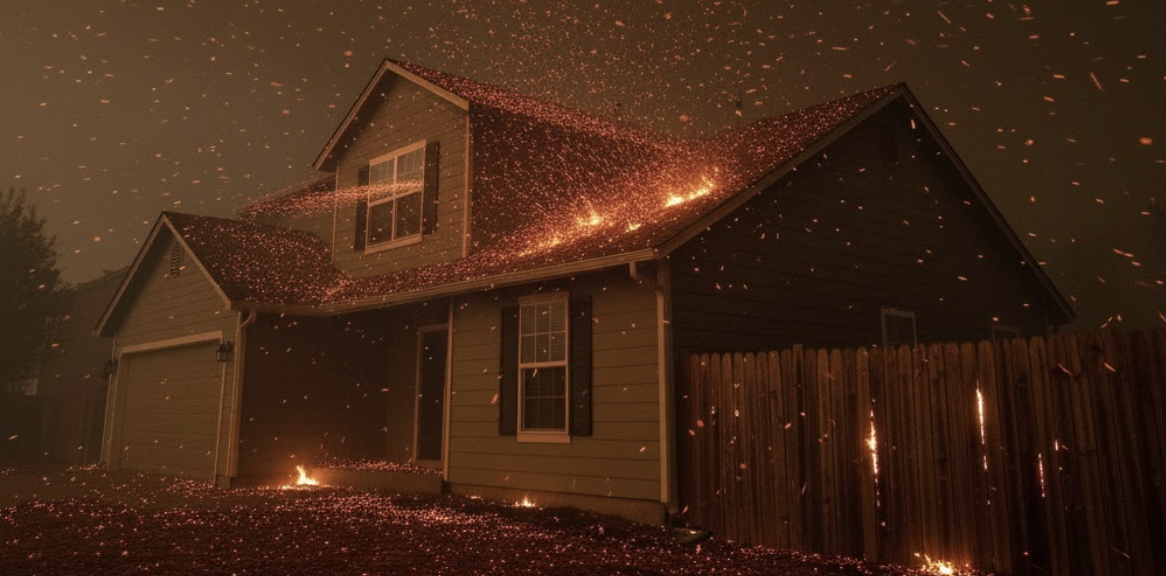In the last article, we established that the "ember storm"—not a giant wall of flames—is the primary threat to your home. Now, we need to understand how this "red snow" actually ignites a structure.
The National Institute of Standards and Technology (NIST) and the Insurance Institute for Business & Home Safety (IBHS) are the premier research organizations in this field. Using tools like the NIST "Dragon" ember generator, they have repeatedly tested building components to failure.
Their research definitively identifies four primary pathways for an ember-based ignition.
The Four Primary Pathways of Attack
- Landing on the structure: Embers are blown by wind and accumulate on horizontal surfaces like roofs or decks. If the roofing is combustible (like an old wood shake) or if there is debris (like dry leaves) on the deck, they can easily find fuel to ignite.
- Entering into the structure: This is the most insidious pathway. Embers are blown through unscreened or improperly screened vents (for attics, eaves, or crawl spaces). Once inside, they can ignite insulation or stored items, allowing the home to burn "from the inside out," often hidden from firefighters until it's too late.
- Landing on landscape: Embers land on the ground near the home. If this area contains combustible mulch, dry grass, or flammable plants, they will ignite and create a small fire that then makes direct flame or radiant heat contact with the home's siding or windows.
- Landing on nearby fuels: Embers ignite other combustible items on your property, such as an adjacent wood fence, a firewood pile, or a shed. These items then act as a large, secondary fire, burning hot enough to ignite the main structure.
The "Nooks and Crannies" Problem
Wind does not deposit embers evenly. Research into fluid dynamics shows that embers are carried by wind and accumulate in "nooks and crannies," just like dust or snow.
The most critical accumulation spot is the ground-to-wall intersection, where the vertical wall of your home meets the foundation or patio.
Embers pile up in this corner, igniting any fine fuels (mulch, leaves, dry weeds) located there. This creates a sustained fire at the base of the wall, which is the perfect position to break a window or ignite the siding.
The Non-Negotiable Conclusion
This body of research leads to a singular, non-negotiable conclusion. The widespread and unpredictable nature of ember showers means the exposure itself "cannot be eliminated or reliably reduced".
Therefore, the only viable mitigation strategy is to control the vulnerability of the structure.
As NIST officially recommends: "All structures MUST be hardened for ember exposures". A single, unmitigated vulnerability can, and often does, result in the total loss of the structure.


